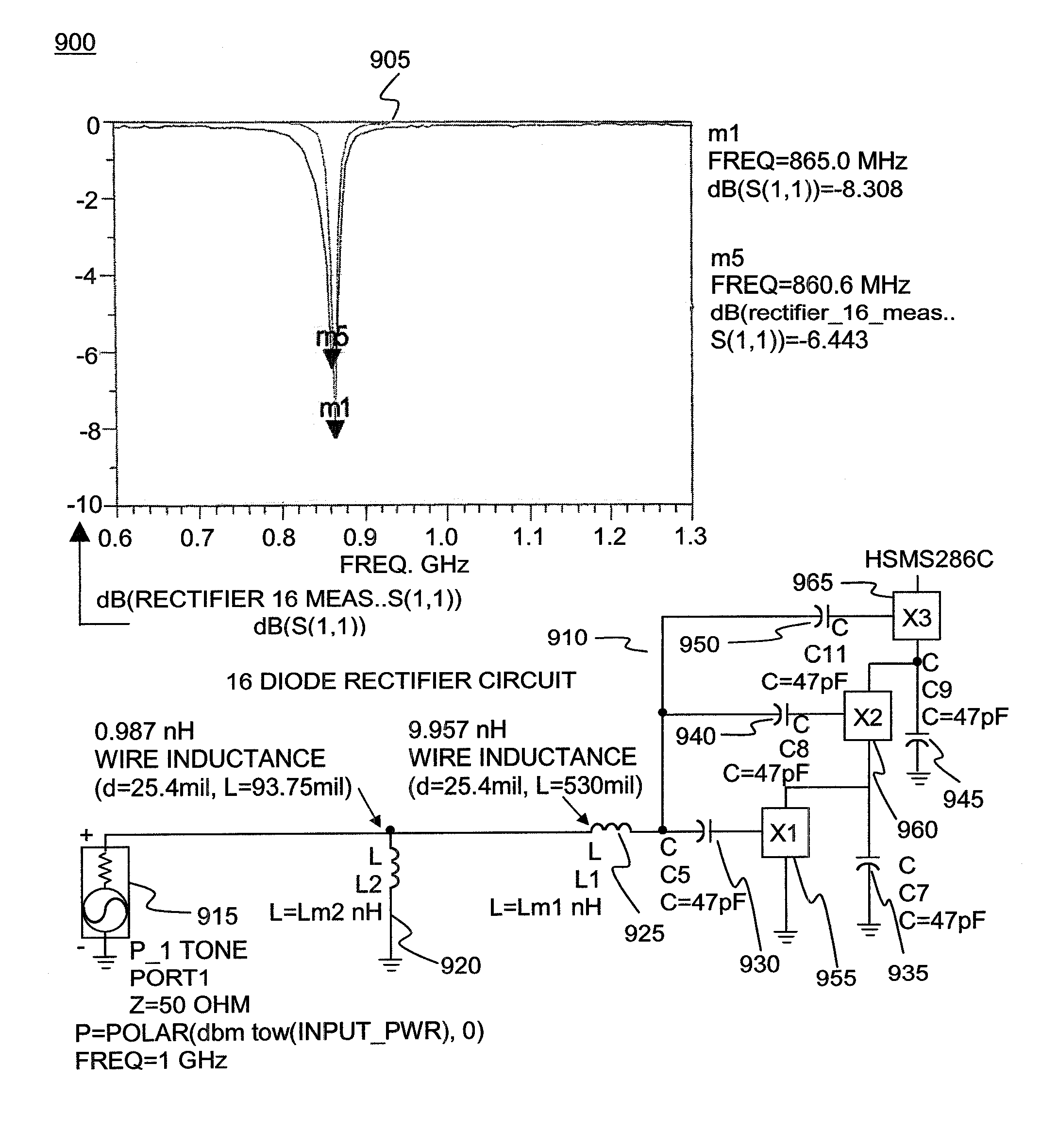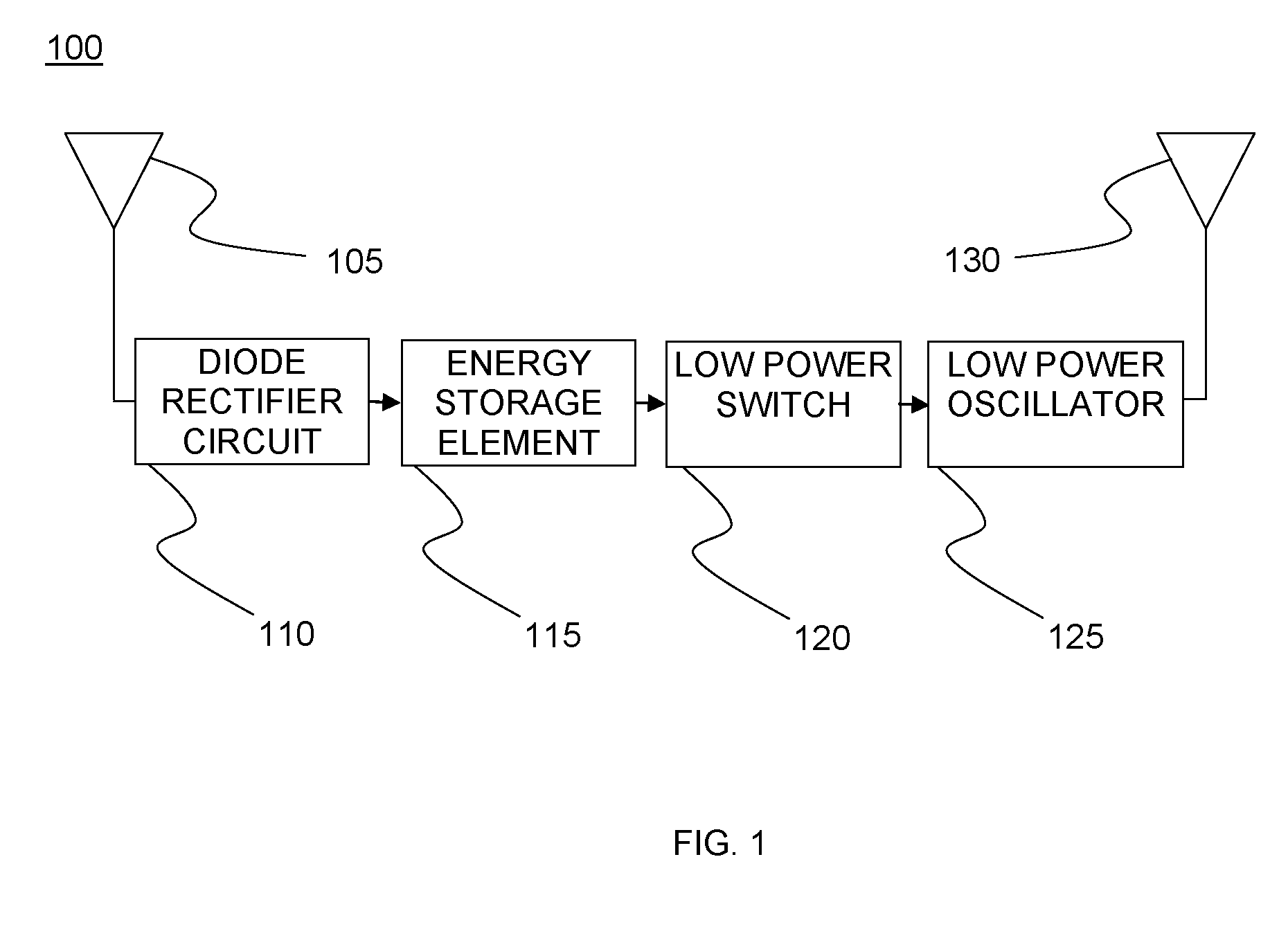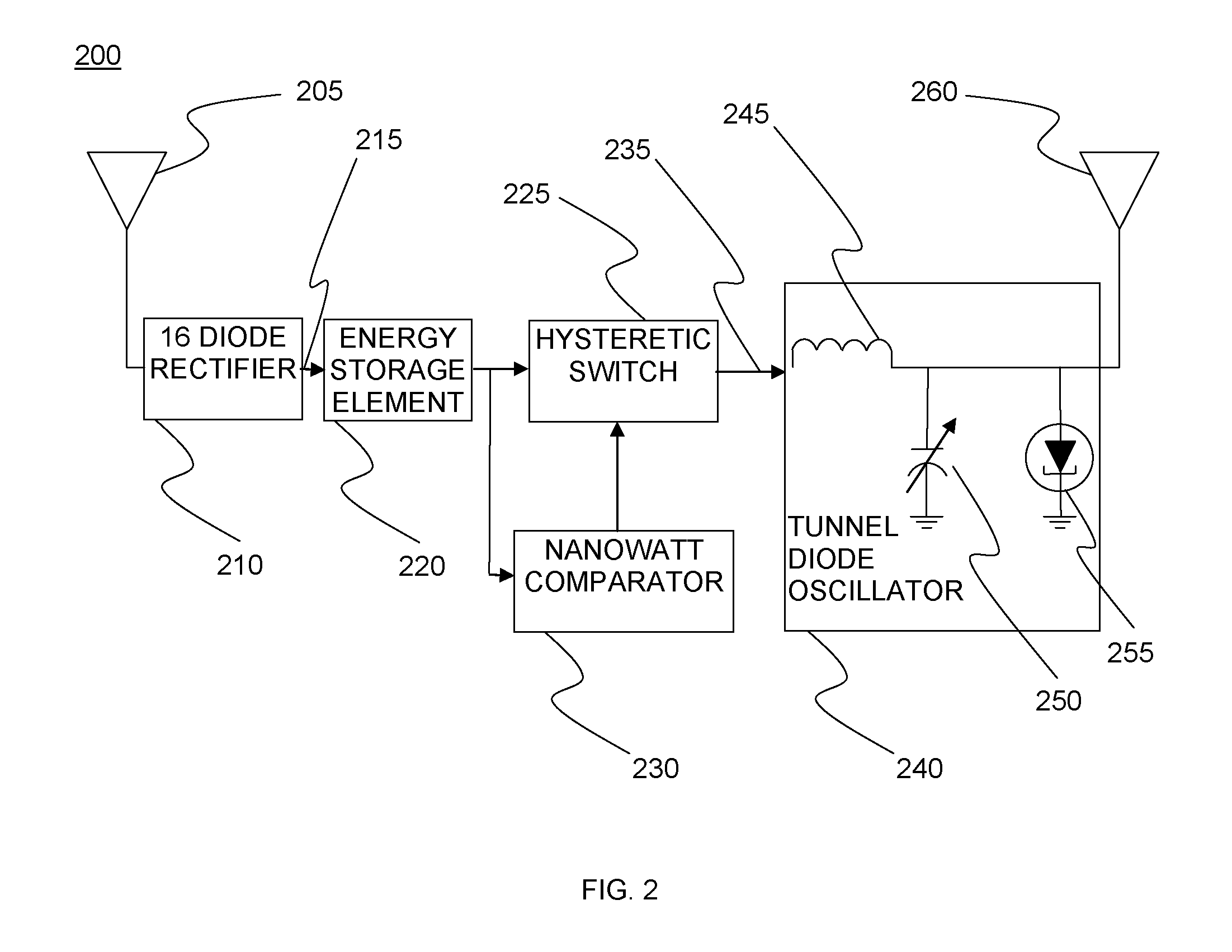RFID transponder using ambient radiation
a transponder and ambient radiation technology, applied in the field of transponders, can solve the problems of limited tag life to the life of the battery, inability to access the tag for many applications, and inability to achieve the effect of many applications
- Summary
- Abstract
- Description
- Claims
- Application Information
AI Technical Summary
Problems solved by technology
Method used
Image
Examples
embodiment 100
[0024]FIG. 1 illustrates embodiment 100 of an RFID transponder that operates off of ambient radiation. The antenna 105 receives RF power from the environment. The diode rectifier 110 is a high efficiency diode rectifier circuit that converts nano-watt levels of received RF power to milli-volt levels of DC voltage. The DC power is stored in the energy storage element 115. Once the energy storage element 115 is charged to a pre-defined level, the hysteretic switch 120 will discharge the energy to the low power oscillator 125. Low power oscillator 125 operates off of low voltage levels to produce micro-watts of transmit power. The microwatts of power generated from nano-watt levels of received RF energy is transmitted via antenna 130. An optional low current (nanoamps) charging path and small battery may be added to the energy storage element 115, allowing for a low duty cycle mode of operation. Battery power consumption is sufficiently low that the battery will last for essentially it...
embodiment 200
[0025]FIG. 2 depicts embodiment 200 with receive antenna 205 operating at 831 MHz −28 to −38 dBm. For nonlimiting embodiments, 160 to 1600 nW activate the tag. Sixteen diode rectifier 210 has output 215 of 50 to 400 millivolts to energy storage element 220. Energy storage element 220 comprises 1 to 10 microFarad capacitance (1.3 nJ to 80 nJ of stored energy), with E=½ (CV2), taking 160 to 1,600 mS to charge and 40 to 800 mS to discharge. Energy storage element 220 output is provided to hysteretic switch 225 and nanowatt comparator 230. Nonlimiting embodiment examples include a Maxim® MAX9027 at 1.8 volts at 450 nA. Maxim is a registered trademark of Maxim Integrated Products, Inc. Output of switch 225 is 235 50 to 200 millivolts. Switch 225 output 235 is applied to tunnel diode oscillator 240. Tunnel diode oscillator 240 operates at 50 to 200 micro watts (65 millivolts at 1 milliamp, typical) and comprises inductor 245, Micro-Electro-Mechanical Systems (MEMS) sensor 250, and tunnel ...
embodiment 1100
[0035]FIG. 11 provides data for an embodiment 1100 of a hysteretic switch. Active hysteresis switch waveform 1105 provides Cap and Switch out results for −2 to +2 seconds over −0.5 to +2.5 volts. Active hysteresis switch waveform 1110 provides Cap and Switch out results for −0.005 to +0.005 seconds over −0.5 to +2.5 volts. Active hysteresis switch positive edge switching time (50 Ohm load) 1115 provides Cap and Switch out results for −40 to +40 nanoseconds over −0.5 to +2.5 volts. Active hysteresis switch negative edge switching time (50 Ohm load) 1120 provides Cap and Switch out results for −40 to +40 nanoseconds over −0.5 to +2.5 volts. In embodiments, the hysteretic switch trickle charges batteries and or capacitors. Properties are derived from the input voltage level. Employing a hysteretic switch plus low-power components enables use of very small devices.
Method
[0036]FIG. 12 is a flow chart depicting a method 1200 for a transponder using ambient radiation. Ambient radiation is ...
PUM
 Login to View More
Login to View More Abstract
Description
Claims
Application Information
 Login to View More
Login to View More - R&D
- Intellectual Property
- Life Sciences
- Materials
- Tech Scout
- Unparalleled Data Quality
- Higher Quality Content
- 60% Fewer Hallucinations
Browse by: Latest US Patents, China's latest patents, Technical Efficacy Thesaurus, Application Domain, Technology Topic, Popular Technical Reports.
© 2025 PatSnap. All rights reserved.Legal|Privacy policy|Modern Slavery Act Transparency Statement|Sitemap|About US| Contact US: help@patsnap.com



